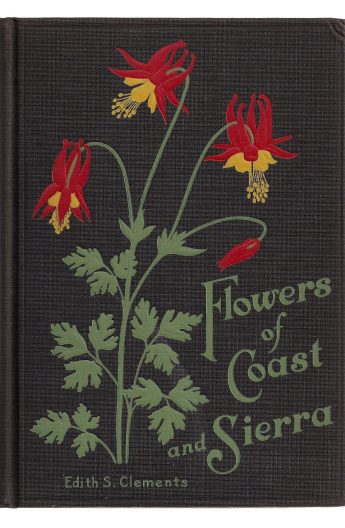 Unusual for her time, Edith Clements (1874-1971) had a formal botanical education; she received a Ph.D. in botanical ecology from the University of Nebraska, and spent her life in various academic and research pursuits. Typically this was in conjunction with her husband, Frederic Clements (1874-1945), who was also a plant ecologist. Together, they published “Rocky Mountain Flowers” in 1914, a botanically detailed flora of the flowering plants including trees, but no conifers or ferns. The watercolor illustrations by Edith Clements are exquisite, typically showing several plants from the same family together. On her own, she later published “Flowers of Mountain and Plain” (1926), a book for a more general audience using many of the same illustrations.
Unusual for her time, Edith Clements (1874-1971) had a formal botanical education; she received a Ph.D. in botanical ecology from the University of Nebraska, and spent her life in various academic and research pursuits. Typically this was in conjunction with her husband, Frederic Clements (1874-1945), who was also a plant ecologist. Together, they published “Rocky Mountain Flowers” in 1914, a botanically detailed flora of the flowering plants including trees, but no conifers or ferns. The watercolor illustrations by Edith Clements are exquisite, typically showing several plants from the same family together. On her own, she later published “Flowers of Mountain and Plain” (1926), a book for a more general audience using many of the same illustrations.
I think Edith saved her best work for West Coast readers, with “Flowers of Coast and Sierra” (1928), including the mountain ranges of Oregon and Washington, even if they are missing from the title. She was self-taught as an artist and comfortable driving throughout the West to paint from living specimens. While clearly steeped in botanical knowledge, she sought to reach a general audience with both her art and writing. An example is her impression of the glacier lily (Erythronium grandiflorum), saying these “will spring up by the thousand and carpet the earth with smooth green leaves which can scarcely be seen for the myriad bright-yellow blossoms nodding above. On the slopes of Mount Rainier, they unite with the white avalanche-lily (E. montanum) in turning the scene into fairyland.”
Excerpted from the Winter 2020 issue of the Arboretum Bulletin